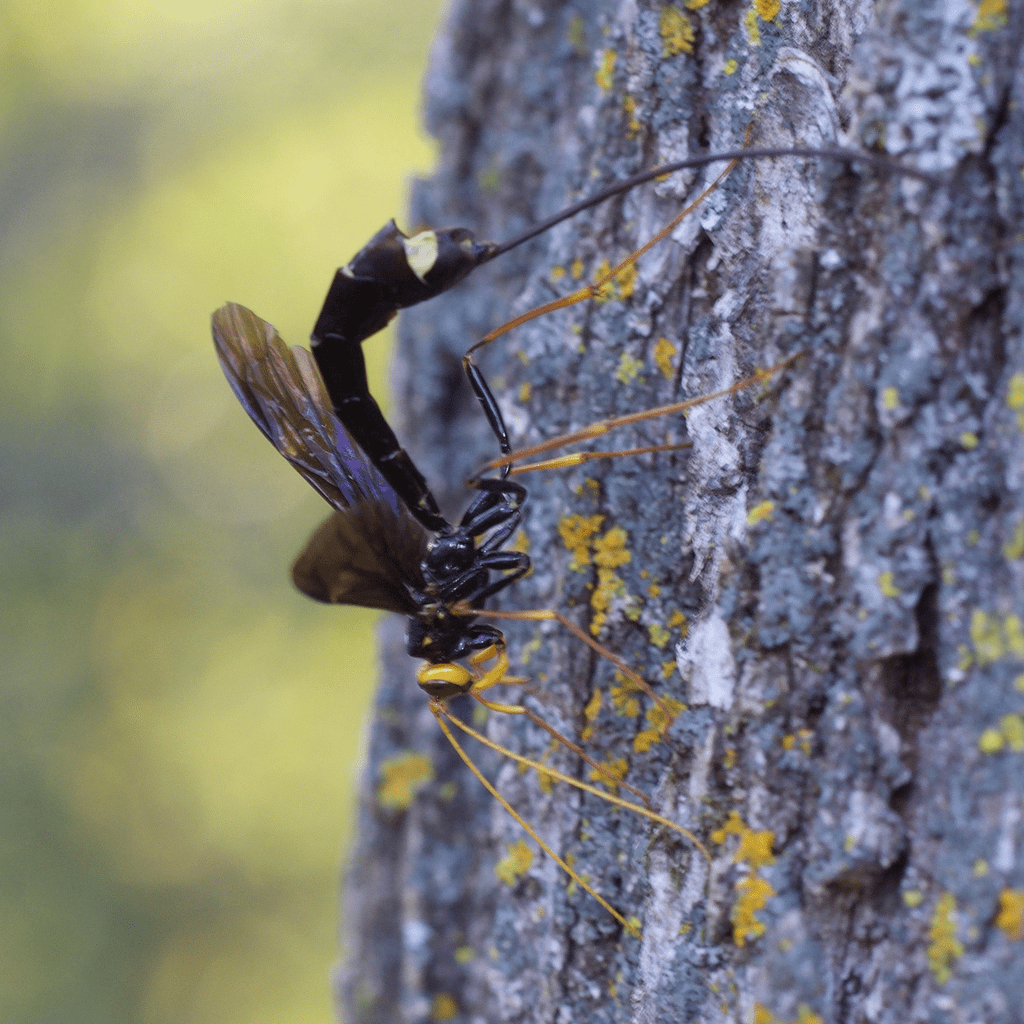
Some insects have the strangest, sci-fi-like characteristics. On some dead trees in the Arb, sometimes you can see small but deep holes on the trunk. The holes can be caused by many insects, among them two kinds of wasps that are particularly intriguing – pigeon horntails (Tremex columba) and giant ichneumon wasps (Megarhyssa genus).
Sized around one to two inches, an adult pigeon horntail has a thick spine at its rear that serves as the ovipositor (egg-depositor) for females. Although the ovipositors of many species in the Hymenoptera order (wasps, bees, and ants) have adapted to be “stingers” – hence why they sting – the pigeon horntail keeps the ovipositor’s original function and poses no threat to humans (instead, the ovipositor of horntails has inspired advanced neurosurgical probes). When a female wants to lay eggs, she finds a dead or dying tree, bores into the tree with her ovipositor, and injects the eggs deep into the trunk. At the same time, she spreads fungus spores from a pocket in her abdomen into the incision, and the fungus grows and softens the wood for the larvae’s consumption. A female usually exhausts her life during this process, so sometimes we can even see them dead with ovipositors still embedded in the trunk.
Before a pigeon horntail larva matures and drills out from the tree (creating the holes that we see), it lives a safe and shielded life, if a giant ichneumon wasp doesn’t find it. Reaching five inches long and menacing-looking, an egg-laying giant ichneumon wasp can locate the pigeon horntail larvae through either vibration or smell, and with her three-inch long ovipositor that consists of three separated filaments, she curls up, drills deep into the wood, lay an egg precisely onto the larva, and stings and paralyzes the larva. Cruelly, the newly hatched ichneumon larva will consume the living but immobilized horntail larva in order to grow. When it matures, it also drills out from within, creating the same-looking holes on the trunk. (Reference: insectidentification.org)
–Walt Li ’23, for the Cole Student Naturalists
Add a comment